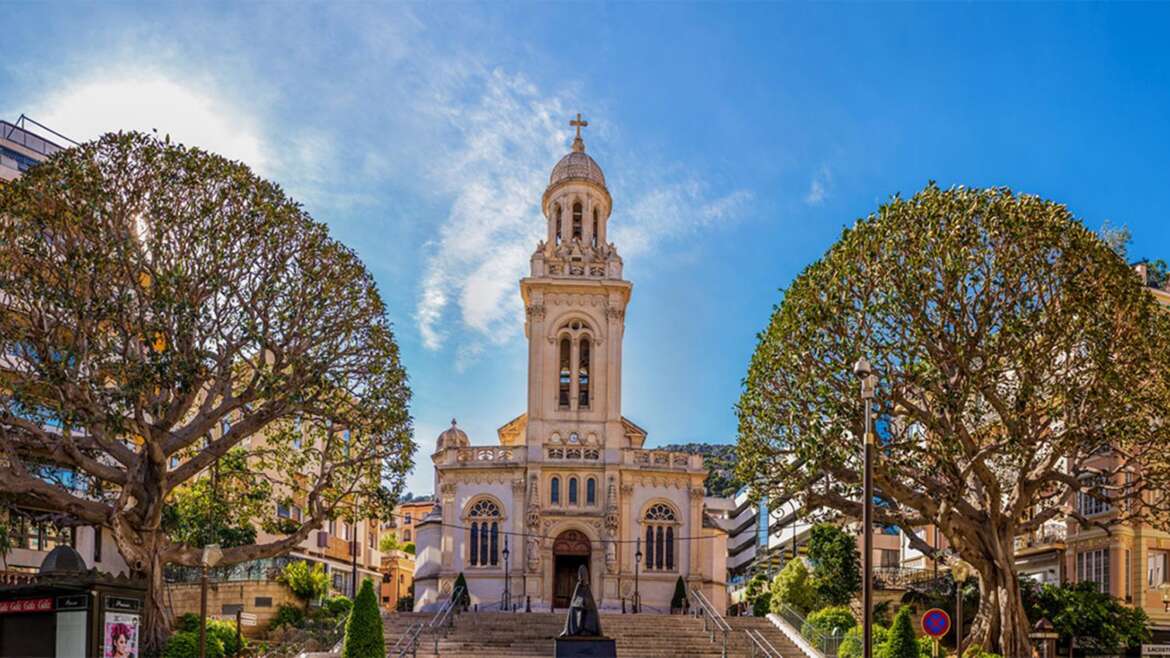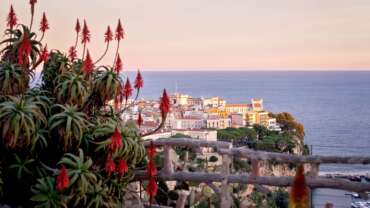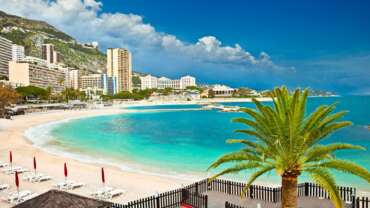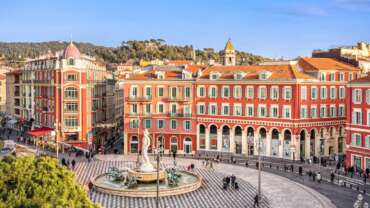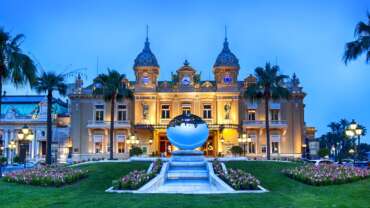Monuments of Monaco
Monaco proudly bears the standard of dreams and glamour around the world but it is, above all, a tourist destination with a remarkable heritage and an outstanding wealth and variety of sites, museums and excursions.
Cathédrale de Monaco
This Roman-Byzantine style building was constructed in 1875 using white stone from La Turbie. It houses the tombs of Monaco’s former Princes. Inside, alongside the magnificent high altar and the Episcopal throne made from white Carrara marble, stands a retable by the Niçois painter Louis Bréa, which dates from the year 1500.
Courthouse
This Palace was built in 1924, on the personal initiative of HSH Prince Louis II and inaugurated on May 1st 1930.
It is built out of sea tuff, a grey and porous stone, which was also used for Monaco’s ramparts. This stone contains many small pebbles, and sometimes mollusc shells.
The bust of the Sovereign Honoré II, dated 1568, appears on one of the Palace façades.
Fort Antoine
This fortress built at the beginning of the 18th century is now an open air theatre; it was rebuilt in 1953 under the initiative of HRH Prince Rainier III after having been destroyed in 1944.
Its military architecture, watchtower and the almost total solitude which can be found there, all combine to give it a particular charm. Its stage has been pleasantly arranged with a pyramid of cannon balls at its centre.
The military architecture of the fort is emphasised by the pittosporum hedges which serve as protection where there is no parapet.
Prince’s Palace
The Prince’s Palace in Monaco is a private residence, but the State Apartments are open to visitors for part of the year.
The Palace has a long history and has been extended and renovated several times over the centuries. Its origins date back to the early thirteenth century – 1215 to be exact. Following a succession of transformations, the ancient Genoese fortress became one of the most luxurious residences of the seventeenth century, in a style extremely characteristic of the Louis XIV era.
Prince Honoré II assembled substantial collections of artworks here, which unfortunately disappeared during the French Revolution, when the Palace was looted and used as a hospital for troops from the Italian Army.
Today, it is possible to admire the splendours of the Palace, including: the Palace Chapel, dedicated to St. John the Baptist, the Hercule Gallery, the Mirror Gallery, the Red Room, the York Room, the Yellow Room or Louis XV Bedroom, and the Throne Room, as well as numerous frescoes, tapestries, and items of furniture.
The State Apartments are not accessible by wheelchair, since they are accessed via staircases.
Saint-Charles Church
This Renaissance style building with its bell tower raising 30 metres skywards was inaugurated in 1883.
Nineteen stained glass windows lighten up its nave, where the gilded chandelier comes from the old arms room at the Princely Palace.
Sainte- Dévote Church
This 11th century votive chapel is dedicated to the Principality’s and Princely family’s Patron Saint.
It was built in the hollow of the “Vallon des Gaumates”, where during the 4th century a frail boat carrying Sainte Dévote’s remains ran aground at its entrance.
Every year on 26th January, a boat is burnt at nightfall as part of a still fervent traditional ceremony.
Statue of Juan Manuel Fangio
This statue sculpted by Joaquim Ros Sabaté is a tribute to the Argentine motor racing driver. There are six such statues around the world, all identical, in Buenos Aires (Argentina), Monaco, Montmeló (Spain), Nürburg (Germany), Stuttgart (Germany) and Monza (Italy). Juan Manuel Fangio is seen by many as the greatest driver in history. In seven full seasons in Formula One, he was world champion five times (with four different teams) and runner-up twice.
The Changing of the Guard
Every day at 11.55 am, a changing of the guard ceremony takes place on the Palace Square, a solemn military ritual performed with perfect coordination.
Since their creation on 8 December 1817, the Palace Guards have ensured the security of the Palace, His Serene Highness the Sovereign Prince and the Princely Family, as well as His properties and residences and their immediate surroundings. The Guards’ other duties include providing the Prince with a guard of honour, enforcing laws and maintaining public order.
The motto of the Palace Guards is “Honour, Loyalty and Devotion”. The Guard is currently composed of 124 soldiers: three officers, twenty-five non-commissioned officers and ninety-six ordinary soldiers.



